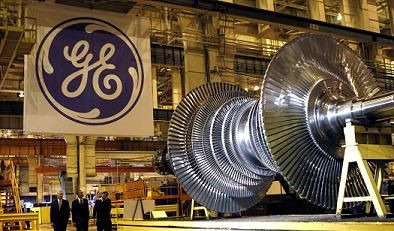US Q3 GDP Growth Not As Good As It Looks; Q4 Unlikely To Prove Much Brighter Due To Fiscal Cliff, Hurricane Sandy

The revision to third-quarter U.S. gross domestic product growth to 2.7 percent annualized rate, up from the initial estimate of a 2 percent gain is encouraging, but the report's details show that growth has probably slowed in the fourth quarter and will continue to slow in early 2013.
The U.S. economy expanded at its fastest pace in nearly three years between July and September, the Commerce Department said Thursday. But the bulk of the rise is inventory adjustment and a sharp spike in government spending.
Business inventories are now estimated to have added 0.8 percent to overall GDP growth in the third quarter. They were previously estimated to have subtracted 0.1 percent.
“The bigger the build-up in the third quarter, the more likely we are to see a run down in the fourth,” wrote Paul Ashworth, chief U.S. economist at Capital Economics, in a note to clients.
Excluding inventories, GDP rose at a revised 1.9 percent rate, underscoring sluggish demand. Final sales of goods and services produced in the U.S. had been previously estimated to have increased at a 2.1 percent pace.
Consumer spending, which accounts for about 70 percent of U.S. economic activity, was revised down to a 1.4 percent growth rate -- the slowest since the second quarter of 2011, from the 2 percent gain previously reported.
Business investment was also revised to show much deeper cutbacks amid fears of a tightening in fiscal policy next year. Business investment is also now estimated to have contracted by 2.2 percent, rather than 1.3 percent. Government spending is still estimated to have increased by a massive 3.5 percent.
“With a temporary headwind from Hurricane Sandy and uncertainty over the near-term fiscal outlook still very much in play, Q4 is unlikely to prove much brighter,” Barclays economist Peter Newland wrote in a note to clients.
The U.S. economy is expected to grow at a 1.6 percent annualized rate in the fourth quarter, according to the median forecast of over 60 economists polled by Reuters in November. That's down from the 1.8 percent in the October poll.
The Federal Reserve’s November Beige Book, a report on current economic conditions, supported economists’ concerns.
David A. Rosenberg, chief economist and strategist for Gluskin Sheff + Associates Inc. gave a good summary of the repot: All in, a Beige Book that lived up to its name. Beige.
Some details: No districts reported “moderate” growth in November, versus two in October, three in August and five in July. Seven regions reported “modest” growth, versus seven in October, six in August and three in July. And the other five reported “slower or mixed” growth, versus three in October, three in August and four in July.
“So on net, a modest downgrade, though business activity in New York and Philly was hugely distorted by Hurricane Sandy,” Rosenberg wrote Thursday.
And the Book particularly noted that "contacts in a number of Districts expressed concern and uncertainty about the federal budget, especially fiscal cliff."
Expectations for the first three months of next year were cut for the fourth straight month, to 1.5 percent from 1.6 percent, though growth was seen picking up to 2.1 percent again by the second quarter. For 2013 as a whole, economists polled by Reuters expect the U.S. economy to expand by 2 percent, much the same as this year.
In a dovish speech only weeks before a key Dec. 11-12 U.S. central bank policy meeting, New York Fed President William Dudley said any further purchases of Treasury securities in 2013 should hinge on the outlook for employment and inflation.
Dudley, a permanent voting member of the Fed's monetary policy committee and a close ally of Chairman Ben Bernanke, is weighing "unacceptably high" jobless numbers as he thinks about the Fed’s next policy move.
A majority, 27 of 29 economists in a Reuters poll, said the Fed will buy more Treasuries when its current Operation Twist program ends in December. Median estimates were for monthly buys of $40 billion worth of bonds.
"While job growth has picked up some recently, its pace has been insufficient to materially change the labor market picture," Dudley said during a speech Thursday morning at Pace University.
Unemployment rate in the U.S. has fallen from 8.9 percent a year ago to 7.9 percent in October. The country also added a better-than-expected 171,000 new non-farm jobs last month.
Economists fear Superstorm Sandy -- which hit New Jersey, New York and other nearby states in late October – could deal the labor market a setback in November. The consensus estimate now stands at 105,000 jobs created for the month. The government will release its closely watched employment report for November on Dec. 7.
© Copyright IBTimes 2024. All rights reserved.





















